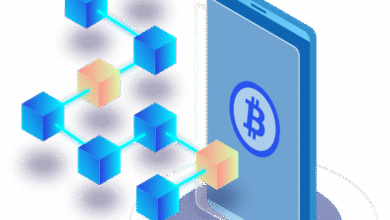EEG Software Built for Real-Time Clinical Response

When a patient experiences a seizure in a hospital or clinical setting, every second counts. Timely intervention can prevent injury, reduce the severity of the event, and improve long-term outcomes. Yet, seizures are often missed or misclassified—especially when clinicians are managing multiple patients or don’t have round-the-clock access to EEG experts. Technology has stepped in to bridge this gap.
Modern hospitals are beginning to adopt advanced tools that support clinical staff in identifying seizures as they occur. Among the most promising innovations is EEG software, which uses AI and real-time EEG analysis to alert clinicians the moment a seizure starts. These tools are changing how neurological events are managed and monitored in critical care.
Why Accurate Seizure Detection Matters
Seizures, especially non-convulsive ones, can be difficult to recognize without EEG monitoring. For patients in the ICU or under sedation, visible symptoms may be absent. Undetected seizures can lead to prolonged neurological damage or secondary complications.
Without the right monitoring tools:
- Seizures may go unnoticed for hours
- Clinicians may delay treatment due to diagnostic uncertainty
- Misinterpretation of EEG data can lead to incorrect interventions
This is where intelligent detection platforms make a real difference—reducing diagnostic delays and enhancing patient safety.
How Seizure Detection Software Works
Unlike traditional EEG monitoring, which requires human review, AI-powered seizure detection tools continuously analyze EEG signals using machine learning algorithms. The software is trained on thousands of EEG patterns from diverse patients to recognize seizure signatures in real time.
Key features of most software solutions include:
- Continuous EEG streaming: Captures live brainwave activity
- Automated alerts: Notifies staff of seizure activity immediately
- Event classification: Differentiates between seizure types and artifacts
- Review dashboards: Helps neurologists confirm and annotate events quickly
These systems are especially useful in emergency and intensive care units where rapid decision-making is critical.
Clinical Benefits of Real-Time Detection
Adopting seizure detection tools in clinical environments doesn’t just enhance efficiency—it directly impacts patient care. Below are some measurable benefits hospitals have reported:
Faster Treatment Times
Real-time alerts allow clinicians to respond within seconds rather than hours, potentially reducing the duration of seizure activity and associated brain stress.
Better Outcomes for High-Risk Patients
Neonatal and ICU patients are particularly vulnerable to silent seizures. With continuous monitoring, interventions can be initiated earlier, reducing long-term neurological damage.
Reduced Burden on Clinical Staff
Automated detection reduces the need for constant EEG supervision, freeing up time for specialists and improving workflow.
More Accurate Diagnosis
Software support can lower the risk of human error in EEG interpretation, especially during overnight shifts or in hospitals with limited neurology coverage.
Use Cases in Modern Healthcare
Seizure detection systems are being used across a variety of clinical settings. Some of the most common include:
1. Neonatal Intensive Care Units (NICUs)
Newborns with conditions like hypoxic-ischemic encephalopathy are at high risk for seizures. Since clinical signs are subtle or absent, software tools are essential for detection.
2. Emergency Rooms
When time is limited and teams are multitasking, automated detection assists in triaging patients faster and identifying neurological emergencies without delay.
3. Long-Term Epilepsy Monitoring Units
In these units, real-time detection tools allow for detailed event logging, supporting neurologists in refining diagnoses and treatment plans.
4. Tele-EEG Services
Hospitals without in-house neurologists rely on remote experts. Detection software bridges the gap by alerting both onsite nurses and remote clinicians simultaneously.
Integration with Hospital Systems
A major advantage of modern seizure detection platforms is their ability to integrate seamlessly with existing hospital infrastructure.
Typical integrations include:
- EMR systems for logging seizure events in patient charts
- Central monitoring dashboards in ICUs and ERs
- Mobile alerts to on-call neurologists or nurses
- Cloud-based storage for EEG recordings and annotations
This ensures that seizure events don’t just get detected—they become actionable items in a patient’s care plan.
Limitations and Areas for Development
Although highly promising, no system is perfect. Understanding the current limitations helps set realistic expectations:
- False positives can occur, especially in noisy EEG environments
- Some tools require extensive calibration to specific hospital equipment
- User training is essential for optimal implementation
- Not all seizure types are equally easy to detect with current AI models
Still, with continuous data input and algorithm refinement, these systems are becoming more reliable and efficient over time.
What to Look for When Choosing a Platform
Healthcare systems exploring seizure detection solutions should evaluate vendors carefully. Look for these key criteria:
- FDA clearance or CE marking for clinical use
- Strong clinical validation studies published in peer-reviewed journals
- Compatibility with your hospital’s EEG hardware and IT systems
- A user-friendly interface for both bedside staff and neurologists
- Customizable alert settings to fit your unit’s workflow
Also, assess whether the company offers ongoing support, software updates, and clinician training post-deployment.
Final Thoughts
As hospitals continue to prioritize faster, safer care, tools that enable immediate clinical response are becoming essential. EEG spike detection is no longer a futuristic idea—it’s a practical solution being adopted by leading hospitals worldwide. When used correctly, it empowers clinicians to make faster decisions, reduces risks for vulnerable patients, and elevates the overall standard of care.




